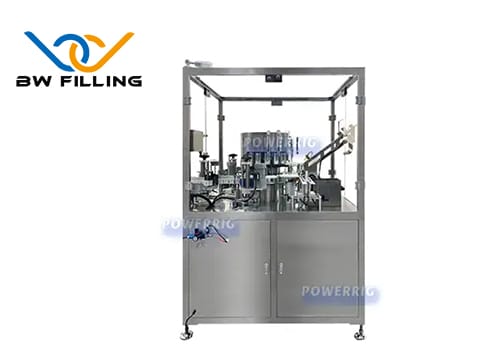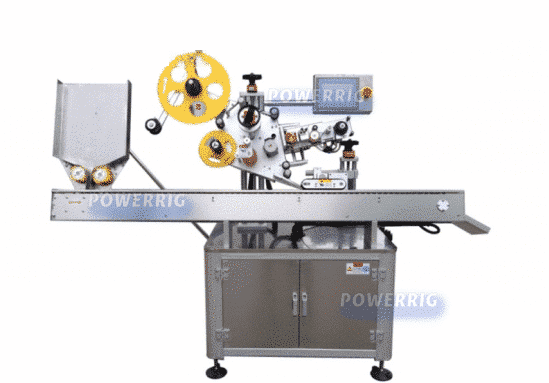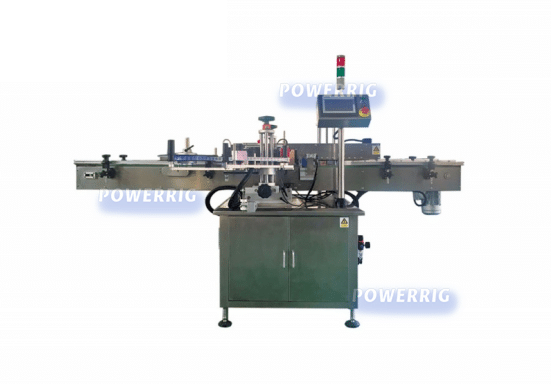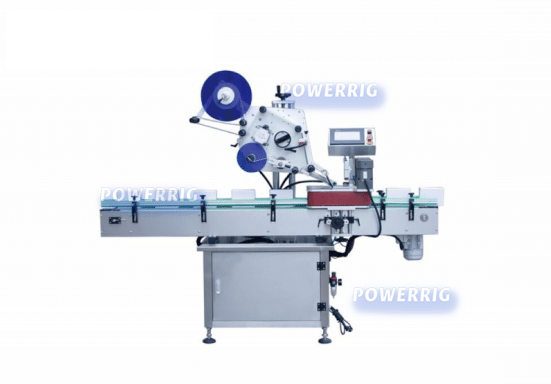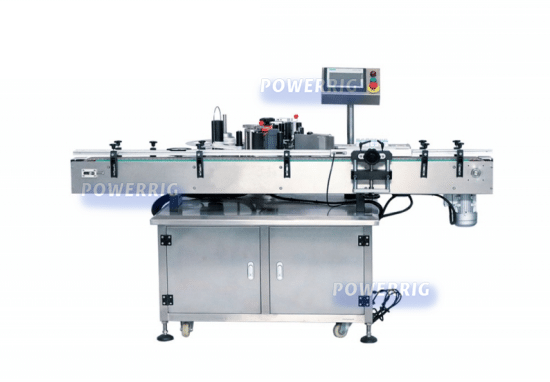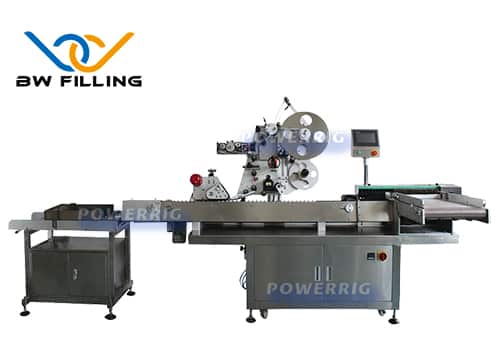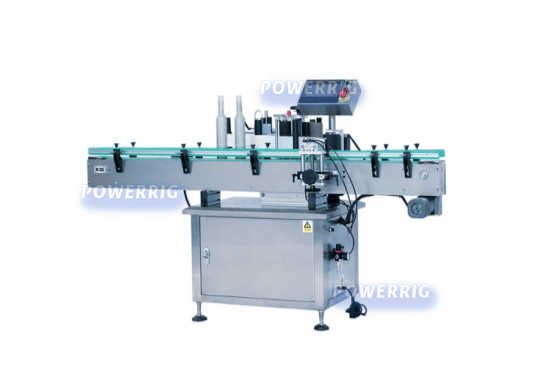LABELING MACHINE
What Do Labeling Machines Do?
Labeling machines are automated devices used in production and assembly lines to quickly and accurately apply product labels. These machines can be equipped with different technologies for printing, scanning, and obtaining data about the product to print the appropriate title. Labeling machines are often used in food processing, medical device manufacturing, pharmaceuticals, and automotive parts manufacturing.
Labeling machines offer several benefits over manual labeling methods. With labeling machines, companies can achieve higher accuracy and better quality control. Additionally, they can save time by speeding up the process of applying labels and making it easier to manage data associated with products. This makes them an effective tool for increasing efficiency and accuracy in industrial applications.
The Ultimate Guide to Auto Labeling Machines →
Labeling machines are used in a variety of industries.
The printing industry uses labeling machines to print labels on bottles and cans. The label can be printed on plastic or paper and must meet the Food and Drug Administration (FDA) requirements. The FDA requires that labels be easily readable and legible, with no mistakes or misprints. Brands must also include instructions for use and warnings about possible health hazards associated with some products.
The medical industry also uses labeling machines to print medication information on prescription bottles. These labels must adhere to strict U.S. Pharmacopeial Convention (USP) regulations. USP is an organization that develops standards for drugs, food ingredients, dietary supplements, dietary foods, and other healthcare products, such as medical devices and diagnostic tests used in hospitals, clinics, and doctors’ offices.
Pharmaceutical companies use labeling machines to print expiration dates on medication containers before they are shipped to retail stores or directly to consumers via mail order companies such as Amazon or Walgreens online shopping sites.
What Are the Different Types of Labeling Machines?
Labeling machines are a great way to make your products more attractive and eye-catching. They can help you brand your company name, logo, or label on multiple products quickly and efficiently. There are many different types of labeling machines on the market today, so it will be vital for you to determine which one is best for your business.
Here are some of the most popular labeling machines:
What Are the Different Types of Labeling Machines?
The bucket labeling machine labels small containers, bottles, and other flat-shaped objects. It is mainly used in the food processing industries. The bucket labeling machine has a print head that moves across the thing and prints the information. Since the label is printed on both sides of the item, it can be easily read from any direction.
The main advantage of this type of labeling machine is that it saves time and money, as there is no need to print labels on each product or container manually. In addition, these machines offer high-quality prints and can be customized according to your requirements. However, these machines cannot be used for printing many labels simultaneously.
Hot Glue Labeling Machine: This labeling machine is ideal for plastic packaging materials such as shrink film or labels that must be applied to boxes or bottles. The hot glue labeler uses a hot melt adhesive that can be applied to plastic surfaces without problems, as cold adhesives do.
Syringe labeling machine: A syringe labeling machine applies labels to vials or bottles using compressed air or a vacuum pump. These systems are commonly used in pharmaceutical manufacturing because they’re designed specifically for this purpose and are very precise when applying labels accurately onto containers.
Wet glue labeling machine: These machines use wet glue to attach the label to the product. The title is printed on a roll of paper or plastic that you feed into the machine. The adhesive is then applied using special brushes. You can choose between manual or automatic models depending on your needs and budget. Some models can print up to 1,000 labels per minute, while others can only handle around 100.
Sticker Labeler: This machine uses pressure to apply stickers onto surfaces such as glass or plastic bottles or jars. It is ideal for smaller quantity applications, but it may not be able to handle large amounts of bottles at once.
Heat Transfer Press: This machine transfers images onto clothing or fabric items. Depending on your needs, you can use iron-on transfers or permanent adhesives with this labeling machine.
Digital Printer: This machine prints directly onto a label sheet that is then applied manually by an employee or through an automated process in your facility. Digital printers are often used with other labeling equipment that requires printed labels as part of their operation, such as bottle cap applicators, heat transfer presses, and sticker labelers,
Roller label applicators
These are the most common type of labeling machines, and they’re designed to apply labels onto products or containers. They use an adhesive roller that applies pressure to the title as it moves over it, giving it a professional look. The best way to use these is if you want to label several different items at once, such as on pallets or boxes.
Inkjet printer labels
These use an inkjet printer instead of applying pressure as rollers do. They’re ideal for labeling large quantities because they don’t waste time or energy applying labels individually. The downside is that they aren’t suitable for small items because they take too long to print out each title individually.
How to Choose a Label Applicator Machine?
Choosing the suitable label applicator machine for your business is crucial because it will determine how efficiently you can label products. Here are some tips for choosing the best label applicator machine:
-Determine the type of label you want to apply. Some label applicators can only apply specific brands, such as pressure-sensitive or thermal transfer-type labels.
-Consider the space available in your facility when choosing a label applicator machine. Some models are more significant than others and may not fit into smaller areas which could limit their usefulness if they’re not correctly placed within your facility’s layout.
-Make sure that the model you choose is compatible with any other kinds of equipment that you currently use in your facility so that they can be used together without any issues arising during operation or maintenance.
Does a Labeling Machine Require an Operator?
A labeling machine does not require an operator. It does, however, require someone to load the labels into the printer and make sure that they are correctly aligned with each other.
The biggest challenge with a labeling machine is ensuring that your labels are lined up correctly. If you don’t do this, you will end up with crooked labels that look sloppy and unprofessional.
You can avoid this by simply checking your labels before printing them out. This will save both time and ink because if you find any errors after they’re printed out, it will be much harder to correct them than before they were printed out.
How Do You Adjust a Label Applicator Machine?
Depending on your device type, there are several ways to adjust a label applicator machine. The following steps describe how to change some of the most popular models.
If you have a label applicator machine that is not working correctly, you should check with your supplier to see if there are any updates to the firmware or software. This will help ensure the machine has all the latest features and operates efficiently.
If this does not solve your problem, then it’s time to look at some standard adjustments that can be made on a label applicator machine. The most common adjustment is ensuring that the pressure on both sides of the label is equal. If one side is stronger than the other, this could cause problems with the adhesion of your brands.
Another adjustment involves ensuring that the pressure on each side of the label is consistent throughout its length. If not, you might find some areas where there is no adhesive and others where there is too much adhesive.
A final adjustment involves ensuring that your material is compatible with your label applicator machine and vice versa. You may need to change certain parts or settings based on what material you’re using for labels or what type of material you’re applying them onto (such as plastic).
What Does a Labeling Machine Cost?
Labeling machines print labels on goods, such as bottles, cans, and containers. The cost of a labeling machine varies depending on the size and type of printed label. Most labeling machines can print labels up to 8 inches long.
The average cost of a labeling machine is approximately $1,000 to $2,000. To print 4-inch labels, you must spend around $2,000. If you print 8-inch labels, expect to pay around $4,000 for the same machine.
Showing 1–12 of 18 results
Product tags
Glue Labeling Machine
It has French Schneider Servo System, French Schneider Servo Drive System, French Schneider motion controller, Siemens color screen human-machine interface, Japan’s Panasonic high-speed high-resolution color label sensor, Japan’s Panasonic high-speed high-resolution gluing and leak detection sensor and Japan Panasonic product detection photoelectric switch.
Hot Glue Labeling Machine
2.In order to achieve continuous web tension, adjust the speed of the feed roller according to the required label length. The threading device is very good and can provide the best film.
Shrink Sleeve Labeling Machine
A shrink sleeve labeling machine is a type of packaging equipment used to apply shrink sleeves onto containers or products. It is designed to automatically apply and shrink heat-sensitive labels or sleeves onto various types of bottles, cans, or containers using heat and pressure. This machine is commonly used in industries such as food and beverage, cosmetics, pharmaceuticals, and household products for branding, product identification, and tamper-evident purposes.
Syringe Labeling Machine
A syringe labeling machine is a type of labeling equipment specifically designed to label syringes. It is an automated machine that applies labels to syringes, typically in a production or manufacturing setting. The machine can handle a variety of syringe sizes and shapes and can apply labels in a consistent and accurate manner.
Automatic Front&back Sides Labeling Machine(Speed 20-180 pieces per minute)
It adopts SIEMENS PLC control system, which can operate stably and rarely have faults. The operating system adopts Siemens touch screen, which can directly observe the interface. It is very easy to operate, can freely convert Chinese and English, has help function, and will prompt in case of failure.
Automatic Horizontal Way Labeling Machine(Speed 30-180 pieces per minute)
The machine has a strong suitability for all kinds of flat bottles in food, medicine, cosmetic, etc. Various kinds of specifications of glass and plastic flat bottle, no matter use transparent or opaque adhesive labels,all can in the bottle or the side of the vessel with satisfactory tags.
Box Corner Marking Machine(Speed 50-80 boxes per minute)
It is specially used to label the corner of the box and label on the upper plane and side to prevent disassembly. It can be used for double-sided labeling cards, electronic products, mask boxes, medicine boxes and other anti disassembly labels; self adhesive label, self-adhesive film, electronic supervision code, bar code, etc; various cartons, such as poker box, mobile phone box and other boxes; widely used in printing, food, daily chemical, electronics, medicine and other industries; nestle box anti disassembly label, card box anti disassembly label, network card box anti disassembly label, mask box, etc. Automatic labeling machine and plane labeling machine can be combined to label continuously.
Double-sided Adhesive Labeling Machine(Speed 120-250 vials per minute)
It is a side labeling machine, which is suitable for flat bottles, round bottles and square bottles with single-sided and double-sided labeling, such as flat bottles of shampoo, flat bottles of lubricating oil, round bottles of hand sanitizer, double-sided labeling, double-sided labeling, double-sided labeling, etc., which can improve the speed of production. It is widely used in daily chemical, cosmetic, petrochemical, pharmaceutical and other industries.
Flat Adhesive Labeling Machine(Speed 50 meters per minute)
The machine can produce labels or no films on the plane, such as folders, books, boxes, cartons, etc. After replacement, it can label uneven surfaces, and often label large plane labels and wide plane objects of printing, stationery, electronics, food, daily chemical, pharmaceutical and other industries. The label head is equipped with a marking machine or spraying machine, which can print the production date, batch number and bar code information. It can be used alone or connected to the production line.
High Speed Adhesive Labeling Machine(Speed 100-350 vials per minute)
Its production is reasonable. The whole labeling process is automatic, easy to operate, very fast, and the labeling is very consistent, beautiful and clean. It can be used to label round containers in some industries, such as pharmaceutical, chemical and food industries.
High Speed Servo Horizontal Labeling Machine(Speed 400 bottles per minute)
Take the different round bottles through conversion mechanism into the conveyor belt of the labeling machine. When the bottle enters the labeling area, when it is detected by the electric eye vision, the photoelectric signal is sent to the PLC. After sorting, the signal is output to the servo motor, which marks it, rolls the label on the bottle, and puts the label conveyor belt of the bottle into the next program through the label machine.
Orientation Bottle Labeling Machine(Speed 30-40 BBL per minute)
The product is transported from a position of the labeling machine to the conveyor belt. When the sensor detects the product, it sends a signal and sends the signal back to the labeling control system. The bottle clamping mechanism jams the barrel and rotates rapidly. When the color code photoelectric detection control system controls the corresponding motor to send the label, stay at the product labeling position and label it. The operation process is to place the product on the product conveyor belt. You can connect the line – > transport the product – > bucket handle – > test the product – > locate the product – > label and re label – > collect the labeled products.




